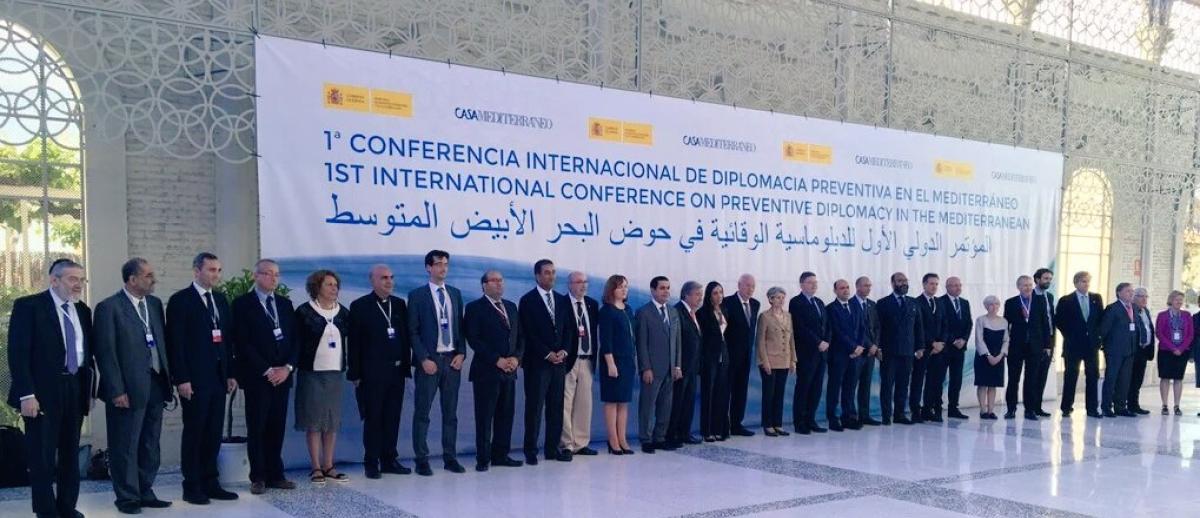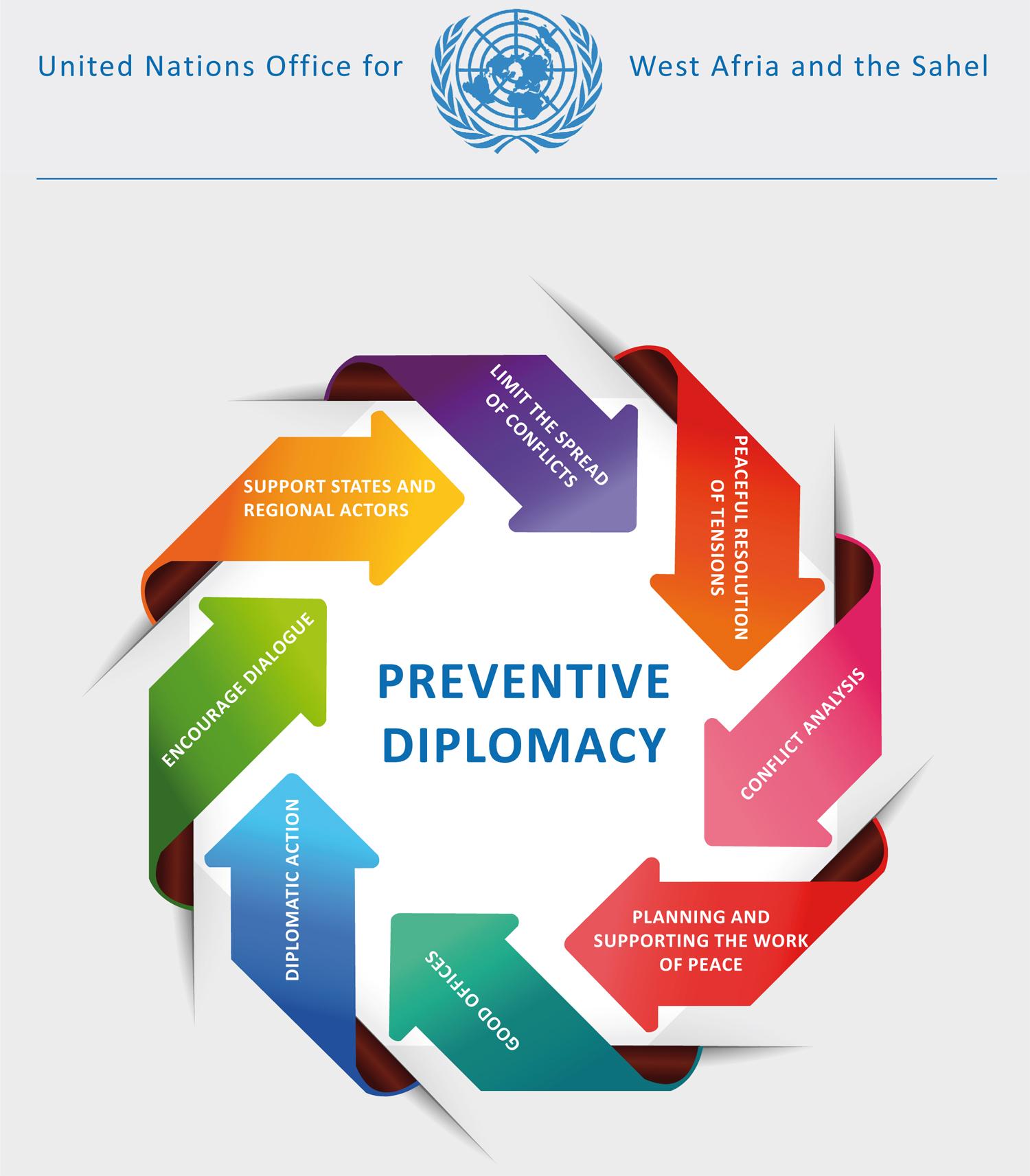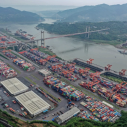Preventive Diplomacy: A Tool for Confronting the Migration Crisis
archive


“Conflict Prevention and the UN Agenda,” May 29-31, 2016 in Alicante, Spain. Organized under the UNAOC.
Preventive Diplomacy: A Tool for Confronting the Migration Crisis
The basic concept of “Preventive Diplomacy” was promoted by third UN Secretary General U Thant and developed in its details by UN Secretary General Boutros Boutros-Ghali in his UN Report, “Agenda for Peace.” The general idea is to use informal relations between different individuals and groups of people (inside one society and between different nations) that should work on two main aims: conflict prevention and the development of new visions, ideas, and concepts for building bridges between “us” and “others”—others understood here in the sense of national, religious, ethnic, or political affiliation. All this activity, today well known as “informal forms of diplomacy,” should at the very least recognize and pay attention to the appearance of “smoke” to be able to prevent the outbreak of the “fire” of conflict. This is especially urgent in the light of accelerating human displacement, migration, and the societal challenges that follow in their wake.
Preventive diplomacy (PD) really didn’t become an integral part of global diplomatic practice until after 1971, when Joseph Montville, renowned expert in the psychodynamics of ethnic conflict, underscored its importance as a mechanism for preventing the emergence of conflicts. In a 2003 book titled Preventive Diplomacy I pointed out that the mechanism on which PD functions is simple: at its core are vertical and horizontal connections between people who share the same ideas and values inside of any given society.
Such group-forming processes operating inside of a single society are eventually followed by the activity of building bridges with informal groups that share the same values in other countries or societies. People sharing common ideas connect first through informal groups. This bonding takes place in various spheres of sports (sports diplomacy) and in affiliations based on literature, science, culture, politics, and so forth. After a while, when the number of informal group members increases, they may begin to apply pressure at the level of state administration and leadership. A central motive for participants in these informal groups is spreading the idea of communion, unity in diversity, and ultimately the prevention of conflict. Such groups of people within any given two societies that are in some form of conflict with each other can arguably become the most effective basis for building peace and fostering conflict reconciliation between the two sides.
From the basic ideas of preventive diplomacy have emerged over time ideas and concepts of cultural diplomacy, public diplomacy, soft diplomacy, sports diplomacy, and more. Basically, today we are talking about a complex evolution of classical diplomacy; Condoleezza Rice, former US Secretary of State, has called it a “permanent transformation of classical diplomatic theory and practice.”1
Today, the practice and results of preventive diplomacy may often seem disappointing, to say the least. It is enough to point out the cases of “Arab Springs” that began with the goal of removing dictatorial and authoritarian regimes from power, and at the end of the day devolved into chaos and destabilization in Libya, Egypt, and elsewhere. The same happened in the Ukraine after “Euromaidan,” when a dispute that started with a protest ended up as a civil war.
From the basic ideas of preventive diplomacy have emerged over time ideas and concepts of cultural diplomacy, public diplomacy, soft diplomacy, sports diplomacy, and more. Basically, today we are talking about a complex evolution of classical diplomacy...
American strategists were the first who used the program of preventive diplomacy to develop mechanisms of so-called non-violent regime change.2 On the other side, great superpowers like China or Russia did not sit with hands folded and wait. They also began developing and implementing numerous models of preventive diplomacy in order to achieve their own desired geopolitical aims. Indeed, the importance of preventive diplomacy concepts can be seen in the number of centers that have been established in America, China, the Russian Federation, Saudi Arabia, Jordan, Morocco, and Indonesia.3

The most important principles for implementing preventive diplomacy are: daily consultations and consensus; activities that build trust; volunteerism; and recognition of universally recognized principles of international law.4
In the present geopolitical conjuncture there are numerous problems demanding deft application of these principles. The chaotic nature of the global present is characterized by increasing individual insecurity and increasingly fragmented national state structures. Wars and crises proliferate seemingly exponentially, and this accumulation of global problems—especially climate change and unabated economic hardship for billions of people—is driving population movements.
Migration from Africa, the Pacific, and many parts of Asia is pushing towards more developed countries and to geographical areas safe from rising sea levels. Anticipated massive population movements of tens of millions of people will trigger a variety of policy responses but unavoidably also economic and social tensions, and represent a huge reservoir of potential new conflicts.
Transcending Migrant “Enclaves”
Perceived “affluence” generates the problems that domicile populations have long experienced from so-called economic migrants. Throughout Europe, in countries such as Belgium or France, these migrants as a rule have formed so-called “enclaves” in which life follows the models, daily habits, and styles practiced by immigrants in their homelands. The enclave reinforces the sense of security and affiliation among immigrants. Inhabitants of the enclave often speak little, if any, of the language of the host country, and many avoid engaging directly in everyday social and political life of the host country. For this reason they often constitute a problem for some members of domicile populations who feel threatened, which in turn generates divisions based on “us” and “them.” People begin to live in separate parts of cities, limiting or diminishing the effects of integration. Such enclaves represent a major concern not only for countries like Belgium, but far more broadly inasmuch as these oases are now connecting throughout Europe and begin to form an exceptionally specific social and religious structure that abounds in radical potentials, from political to religious.
Charles Clarke, Former Home Secretary of the United Kingdom, speaking about cultural diplomacy which is one field of PD, has said: “The core point about Cultural Diplomacy is the need for different groups of people, whether religions, faiths, political groups, or ethnic groups, to understand others and to understand what they are trying to achieve, and what they’re preoccupied with.”5 This cultural segment of daily life is also large part of what preventive diplomacy is all about: respecting other people individually and other people’s cultures. But another dimension is also important, and is summed up in Amartya Sen’s book, Identity and Violence.
Sen says that each of us has within us a whole series of different forms of identity: being man, being British, being white, and so on. And I have the right to decide which of those identities I promote in my own life, and take forward in my own life. This is a very important point that has far-reaching implications, because in this view you stop classifying people as being just a woman, a black woman, a white woman, a white man, or whatever, and say instead that actually every individual has a whole set of identities which they chose for themselves in the way they want to express themselves. The implication for preventive diplomacy is that we urgently need to start re-exploring all (and finding new) experiences that connect us and which are common for each one of us.

After the November 2015 attacks in Paris and Belgium -- Sint-Jans-Molenbeek municipality, Brussels area
Using the advantages of IT technologies and social networks in conjunction with the whole set of preventive diplomacy tools could be a very effective way to overcome the isolation of migrant enclaves and locate solutions to existing global problems, leveraging stronger connectivities of “ordinary people” throughout the world. The main aims must be to understand why someone is thinking the way they do about others, and with the help of PD to do all that can be done to change stereotypes, which potentially generate new forms of conflict. Each stereotype leads to a black and white view of reality, which inevitably increases the conflict potential between the two sides, whatever they are. Individuals—people, citizens—who are friends with others regardless of the color of their goat or their race, ethnic, or religious affiliation can influence the overcoming of divisive tensions and the development of coexistence. This is precisely the essence of all the concepts of preventive diplomacy—the development of long-term peace and stability, with the potential of jointly solving global, regional, and local issues such as climate change, demographic and economic challenges, the problem of maintaining natural resources such as water and food, and so on.
Individuals—people, citizens—who are friends with others regardless of the color of their goat or their race, ethnic, or religious affiliation can influence the overcoming of divisive tensions and the development of coexistence.
Beyond the Autism of Elites
Elite “autism” is the problematic assumption that its own cultural models of life and behavior are universal and solely right. It inevitably leads those close to and responsible for leadership to misinterpret actual states of affairs, which can result in the deepening of crises. An exit from this trajectory is the real objective of both positions in a conflict, and is the place where old style diplomacy must succeed (or fail, with dire consequences). But considering the absence of new political and society leaders with new visions and the power to realize them for a majority of their populations, there is, unsurprisingly, a corresponding absence of confidence in existing political and social establishments all over the world.
The problem of elite autism in the West and among the BRICS as well leaves little hope that solutions to problems such as the looming migration crisis can come from ruling parts of societies. But if we could bypass these impediments to vision, we might locate “common bridges” and build upon what is common to all of us, that which connects us. Solutions may lie in the hands of “ordinary people”—and exactly that is the place for preventive diplomacy.
1. Hans-Joachim Spanger “Between Ground Zero and Square One How George W. Bush failed on Russia” PRIF Reports No. 82,Peace Research Institute Frankfurt (PRIF) 2008 ,ISBN: 978-3-937829-68-5
2. "Preventivng Violent Conflict,Assessing Progress, Meeting Challenges.” Lawrence Woocher, United States Institute of Peace, Special Report 231, September 2009. usip.org
3. Zoran Vitorovic.: "Preventivna Diplomatija, kako spreciti sukobe i ratove.” Ars Libry, Beograd, 2003., str. 23-27
4. Ibid.
5. Hon. Charles Clarke. The International Symposium on Cultural Diplomacy International Economics, 2012. Berlin, Germany.
Agenda for Peace. Preventive diplomacy, peace making and peace-keeping. Report of the Secretary General, UN, June 17 1992., A/47/277. Available at: http://www.un-documents.net/a47-277.htm
Joseph Montville. Interview, Radio Deutsche Welle, June 18, 1995.
Joseph S. Nye, Jr. “Soft power” concept, in Bound to Lead: The Changing Nature of American Power. (NY: Basic Books, 1991), p.330
Christopher Ross, “Public Diplomacy Comes of Age.” In The Battle for Hearts and Minds. (Washington, D.C.: Center for Strategic and International Studies, 2003), p. 252
Amartya Sen. Identity and Violence: The Illusion of Destiny. (New York: WW Norton, 2006)
www.weforum.org/agenda/2017/03/klaus-schwab-new-narrativeforglobalization



